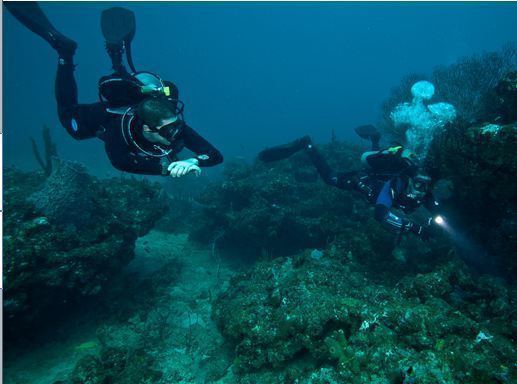 | ||
The frog kick is an underwater propulsion kick used by scuba divers, particularly cave divers, wreck divers, and those who practice the Doing It Right philosophy. It is similar to the swimming action of a frog or the leg action in the breaststroke.
Contents
Technique
Frog kick involves the simultaneous and laterally mirrored motion of both legs together, approximately parallel to the frontal plane. The description assumes that the diver is trimmed horizontal and intents to swim horizontally.
The modified frog kick arches the back and retains slightly bent knees during the power stroke, which keeps the thrust further away from the bottom when swimming above silt.
The frog kick pushes water backwards, and to a lesser degree upwards, rather than backwards with alternating up and down component, as with the flutter kick and dolphin kick also used by divers. The dolphin and flutter kicks can be efficiently performed without interruption, but the frog kick must allow a low drag glide period or energy will be wasted.
Application
Because of the direction of thrust is mostly in line with the diver, or slightly upwards, it is suitable for situations where disturbing the silt on the bottom can cause dramatic loss in visibility, such as inside wrecks and caves, and at any other time when the diver needs to swim close to a silty substrate. Some divers will use it as their standard kick even in more forgiving environments, as the resting position is identical for other kicks that increase underwater mobility, such as the backwards kick and the helicopter turn.
The muscle combinations used are different from those used for flutter kick, and alternating between the two can reduce the chances of leg cramps.
Fins
Most styles of fin can be used with the frog-kick. Only monofins are totally unsuitable. One of the advantages of the frog kick is that it can be used effectively with short, stiff fins, with little blade angle offset, which are also effective for the backward kick and helicopter turns and general maneuvering in confined spaces, but less efficient for the flutter kick.
